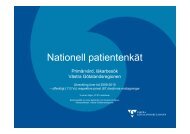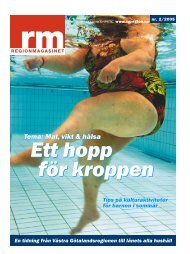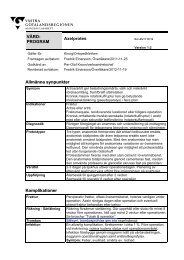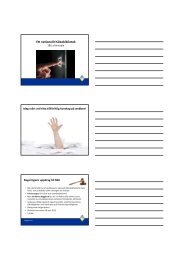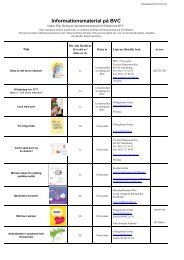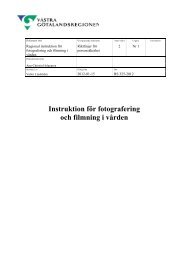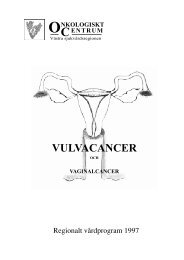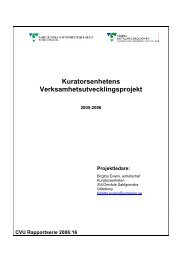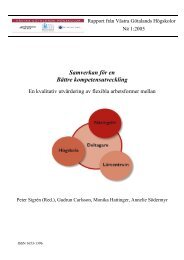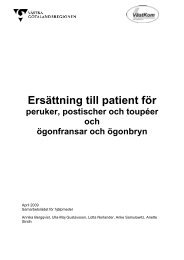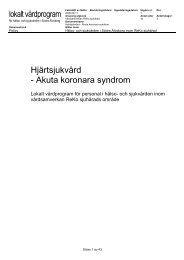FOURTEENTH ANNUAL EUROPEAN PRESSURE ULCER ...
FOURTEENTH ANNUAL EUROPEAN PRESSURE ULCER ...
FOURTEENTH ANNUAL EUROPEAN PRESSURE ULCER ...
You also want an ePaper? Increase the reach of your titles
YUMPU automatically turns print PDFs into web optimized ePapers that Google loves.
Thursday September 1st<br />
Proceedings of the 14th Annual European Pressure Ulcer Meeting<br />
Oporto, Portugal<br />
Relationship Between “Tilt in Space” Wheelchair Function and Risk of Pressure Ulcer<br />
Development<br />
Introduction<br />
Olesen, C.G. 1* , Siefert, A. 2 , de Zee, M 3 , Pankoke, S. 2 , Rasmussen, J. 1<br />
1* M-Tech, Aalborg University, Denmark, (cgo@m-tech.aau.dk)<br />
2 Wölfel Beratende Ingenieure GmbH + Co.KG, Würzburg, Germany<br />
3 Department of Health Science and Technology, Aalborg University, Denmark,<br />
It is well acknowledged that sustained mechanical<br />
loading of soft tissues causes pressure ulcers [1].<br />
The wheelchair adjustments affect the tissue loading in<br />
the sense that the tissue stresses, and thereby the risk<br />
of ulceration, change when the seated posture is<br />
adapted [2]. This study focuses on a basic wheelchair<br />
adjustment called the “Tilt-in-Space” function, with<br />
which many wheelchairs are equipped. The tilt-inspace<br />
function enables the cushion and backrest to<br />
incline while the angle between the cushion and<br />
backrest is kept constant [3]. When the tilt-in-space<br />
function is used, the cushion and the backrest reaction<br />
forces change, which causes a change in tissue<br />
deformation under the buttocks. This study focuses on<br />
investigating how much the reaction forces between<br />
the body and the chair change when tilted in space;<br />
this information will then be used to estimate how the<br />
buttock tissue is deformed.<br />
Methods<br />
The Seated Human computational model from the<br />
AnyBody Modeling System was used to calculate<br />
reaction forces acting between the seat and the<br />
human for different postures. The model has been<br />
validated with respect to the calculated forces by<br />
experimental data.<br />
Figure 1 show the seated AnyBody model not tilted, and<br />
tilted<br />
The “Tilt-in-Space” function was modeled by fixing the<br />
cushion and backrest at a 90° angle relative to each<br />
other. The chair was then rotated backwards with 5°<br />
increments to a maximal inclination of 45° and the<br />
reaction forces for each increment were computed.<br />
The calculated reaction forces were then applied as<br />
boundary conditions to the human body model<br />
CASIMIR. In the interest of limiting computational time,<br />
the finite element model only comprises the buttocks.<br />
Finally the tissue deformation changes caused by the<br />
“Tilt-in-Space” function were evaluated. The FE-model<br />
83<br />
used was a commercially available model developed<br />
by Wölfel, Würzburg, Germany [4].<br />
Figure 2 Human body model CASIMIR used for<br />
calculating tissue deformation<br />
Results<br />
Preliminary results show that the reaction forces<br />
between the seat and the buttocks change, and this<br />
leads to a change in buttocks tissue deformation.<br />
Discussion<br />
The preliminary results found in this study indicate that<br />
the “Tilt-in-Space” function found on many wheelchairs<br />
is not optimal, with respect to risk of developing<br />
pressure ulcers.<br />
Clinical relevance<br />
This work is clinical relevant for wheelchair designers<br />
who aim to enhance wheelchair design with respect to<br />
prevention of pressure ulcers.<br />
Acknowledgements<br />
This work was supported by the project Minimizing the<br />
risk of developing a pressure ulcer (ERDFN-09-0070),<br />
supported by Growth Fund North Denmark and<br />
European Regional Development Fund.<br />
Conflict of Interest<br />
There were no conflict of interests<br />
References<br />
[1] Romanelli M. et.al. Science and Practice of<br />
Pressure Ulcer Management, Springer, 2005<br />
[2] Bush TR. et.al. J.Biomech.Eng. 129: 1: 58-65,<br />
2007.<br />
[3] Michael SM et.al. Clin.Rehabil. 21: 12: 1063-1074,<br />
2007<br />
[4] Siefert A. et.al. Int.J.Ind.Ergonomics 38: 5-6: 410,<br />
2008.<br />
Copyright © 2011 by EPUAP



